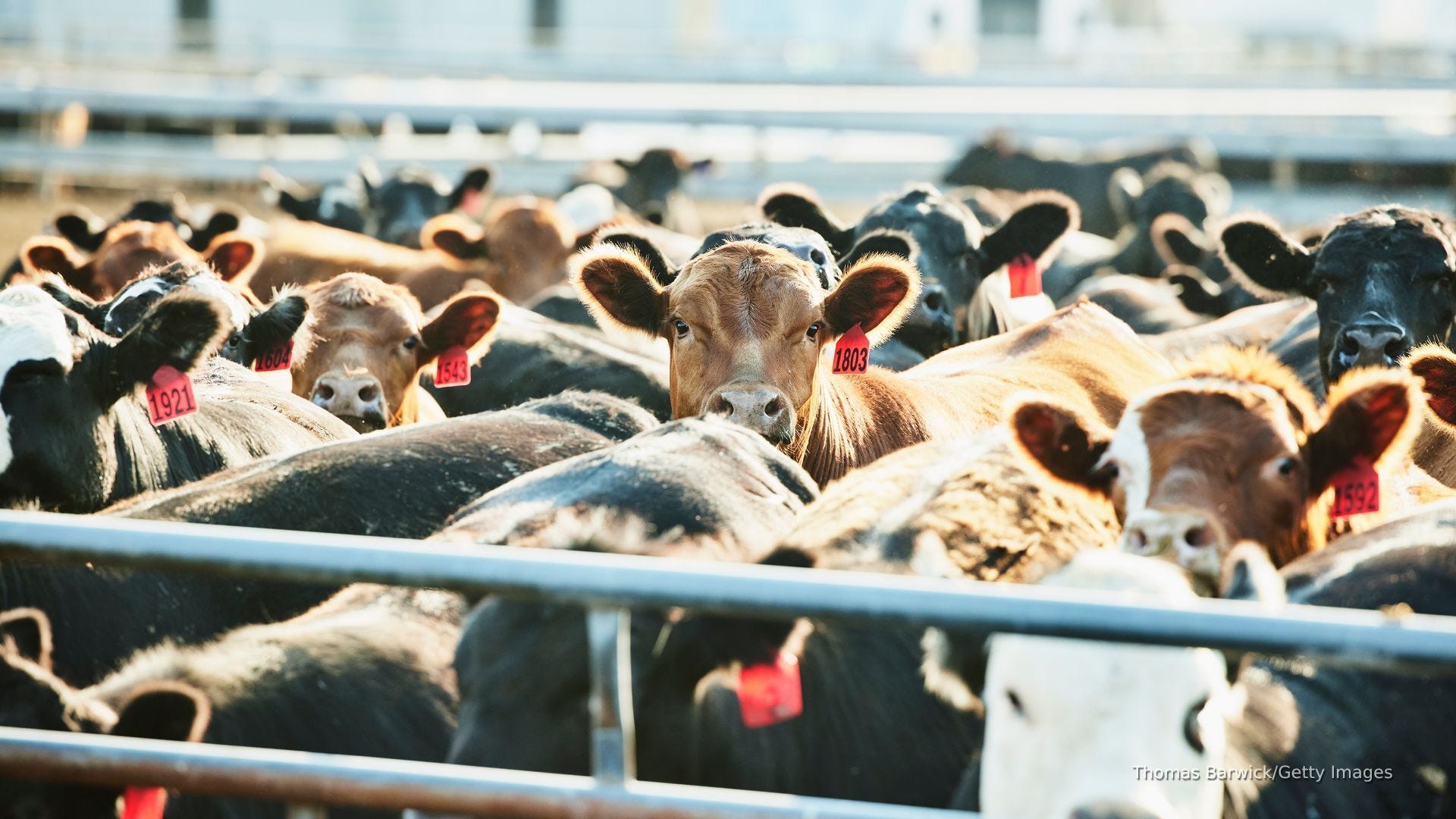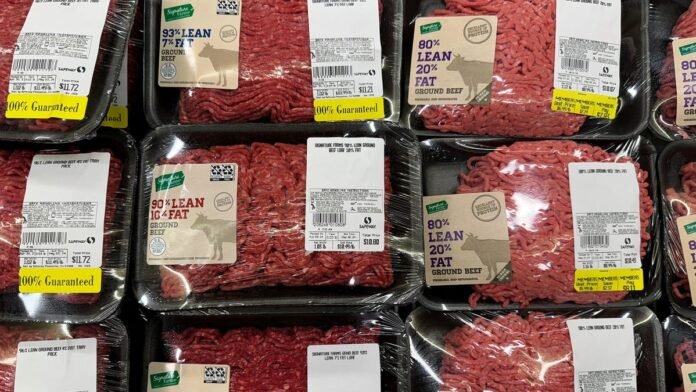Supply constraints and high demand have driven up beef prices. Experts warn that it could take years to rein prices back in.

Here’s why beef prices are at record high
The average retail price for a pound of ground beef in May was $5.98, 16% higher than a year earlier and 34% higher than in 2020.
Straight Arrow News
This year’s Labor Day barbecue won’t be cheap.
Supply constraints and high demand have driven up the cost of beef, with 100% ground beef prices in June surpassing $6 per pound for the first time since data collection started in the 1980s, according to the Labor Department.
While costs may dip slightly once grilling season ends, experts say significant price relief could be years away.
“If we’re thinking about seeing prices lower than we saw last year or going back to prices 5 or 6 years ago, that’s not very likely,” said David Anderson, a professor and extension economist for livestock and food product marketing at Texas A&M. “But I do think there is a chance for some relief from this (summer) spike in prices.”
Why are beef prices higher?
A variety of factors have crunched the nation’s cattle supply over the years, including recent drought conditions that raised the cost of cattle feed and pushed ranchers to send more cows to slaughter. The national beef cow herd is at its lowest point since 1961, according to a January report from the United States Department of Agriculture.
The USDA in May also halted live cattle imports from Mexico due to the spread of New World Screwworm, further limiting the U.S.’s supply and fueling price increases. The fly’s parasitic larvae can cause “serious, often deadly” damage to animals, according to the USDA.
Despite rising prices, there’s still plenty of demand for beef. The USDA estimates consumption this year will be up slightly from 2024.
The U.S. has increasingly turned to imports to meet that demand, especially for lean beef trimmings used in ground beef. Roughly 20% to 30% of ground beef is brought in from countries like Australia and Brazil, according to the Iowa Farm Bureau.
Tariff threats from the Trump administration could drive up prices even further. Brazil, for instance, is facing a 50% tariff starting Aug. 1. Currently, Brazilian beef is subject to a 10% to 36.4% tariff, depending on the size of the import, according to Reuters.
“It adds a lot of uncertainty to the market,” Anderson said of looming tariffs.
When will beef prices drop?
Lower demand tends to spur lower prices, which means shoppers may find some modest relief once the weather cools.
“Typically after midyear, beef prices tend to decline,” Anderson said, adding shoppers are more likely to swap steaks for cheaper roasts later in the year. “Seasonally, I think there’s a chance we see lower prices than where we have been in the last few weeks.”
Still, Anderson said prices are unlikely to drop back to the $3 to $5 range shoppers paid in recent years.
Part of that is because it will take time for ranchers to build up their herds. If a rancher decides to keep a calf born this spring, for instance, they will need to wait years before it’s big enough to send to market, Anderson said.
“That takes us to 2029 for increasing beef production,” he said. “It’s just biology and time.”
The timing also hinges on continued demand for beef, according to Michael Swanson, chief agricultural economist at the Wells Fargo Agri-Food Institute. Higher beef prices are giving ranchers money to build up their herds; if demand wanes and cattle prices drop, recovery could take longer.
Already, cattle farmers and ranchers face “razor thin profit margins,” according to a May report from American Farm Bureau Federation economist Bernt Nelson.
“It’s a very, very nervous supply chain right now because of the record amount of money they have on the table doing what they do,” Swanson said.
How to save money on beef
Swanson’s advice for shoppers looking to save money? Be open to different cuts of meat.
According to June figures from the Labor Department:
- All uncooked ground beef costs $6.34 per pound, up 11% from a year ago
- Chuck roast costs $8.20 per pound, up 7.2%
- Round roast costs $7.76 per pound, up 12.8%
- Sirloin steak costs $12.92 per pound, up 12.7%
- Beef for stew costs $8.02 per pound, up 10.7%
“Everybody likes to buy filet mignon, but there are plenty of cuts that you can get a better value for your money,” Swanson said. “There are cuts that some people don’t want that have delicious flavor if you’re willing to cook them slow.”
